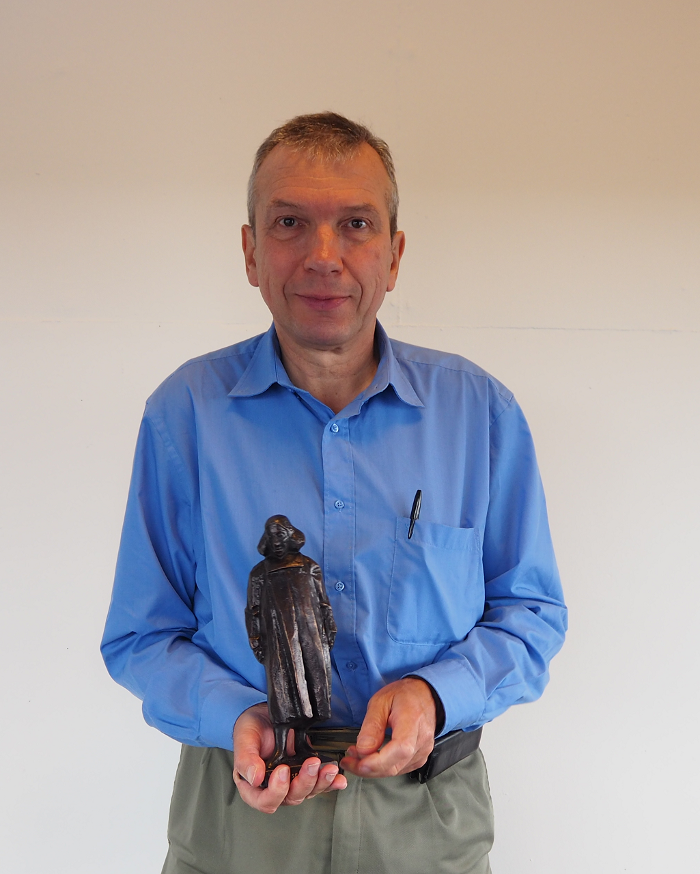
Michel Orrit receives Spinoza Prize in Royal Theatre
On September 12, Michel Orrit received his Spinoza prize in the Royal Theatre in The Hague from OCW Secretary of State Sander Dekker. With the award comes a budget of 2.5 million euro, to be spent freely on scientific research, and the coveted Spinoza statue. Orrit shared the honor with Eveline Crone (also Leiden University) and Albert Heck and Alexander van Oudenaarden from Utrecht University.
Orrit studies the interaction of light with organic condensed matter. He developed a highly sensitive technique to light up molecules (fluorescence) by means of laser light with specific wavelengths so that they can be individually detected. With this, Orrit has laid the foundation for single-molecule optics.
Revolutionary method
In the late 1980s, Orrit came up with the idea that it should be possible to detect a single molecule with fluorescence. At the time, it seemed physically impossible to optically detect such small particles. The American researcher William Moerner published an article in 1989 announcing the first measurement of light absorption of a single molecule. That was a precarious measurement with a great deal of background noise. A year later, Orrit managed to measure fluorescence in one molecule with much more precise measurement results than Moerner’s, through a conceptually simple method. Indeed, this quickly became the standard technique for measuring single molecules and helped to launch new fields, such as single-molecule fluorescence and single-molecule spectroscopy. When Moerner and two others won the Nobel Prize for Chemistry in 2014, the motivation for this prize mentioned Orrit’s work. According to Moerner, Orrit would definitely have shared the prize as well if it could have been awarded to four people—but that is prohibited by the statutes of the Nobel Prize.
Genome
Single-molecule optics has numerous applications. One spectacular example is a technique to map out the genome of a living being in one afternoon for less than a thousand euros. Before, this took much longer and cost millions of euros. In the meantime, Orrit can also locate nanoparticles and molecules without fluorescence. His research helps to unravel the physical and chemical processes in living matter and may be fruitful in identifying the cause of serious diseases such as Alzheimer’s and Ebola.
More information
Click here for an interview with Orrit after the Spinoza Prize announcement.
You can read more about Orrit’s research here.
Due to the selected cookie settings, we cannot show this video here.
Watch the video on the original website or


